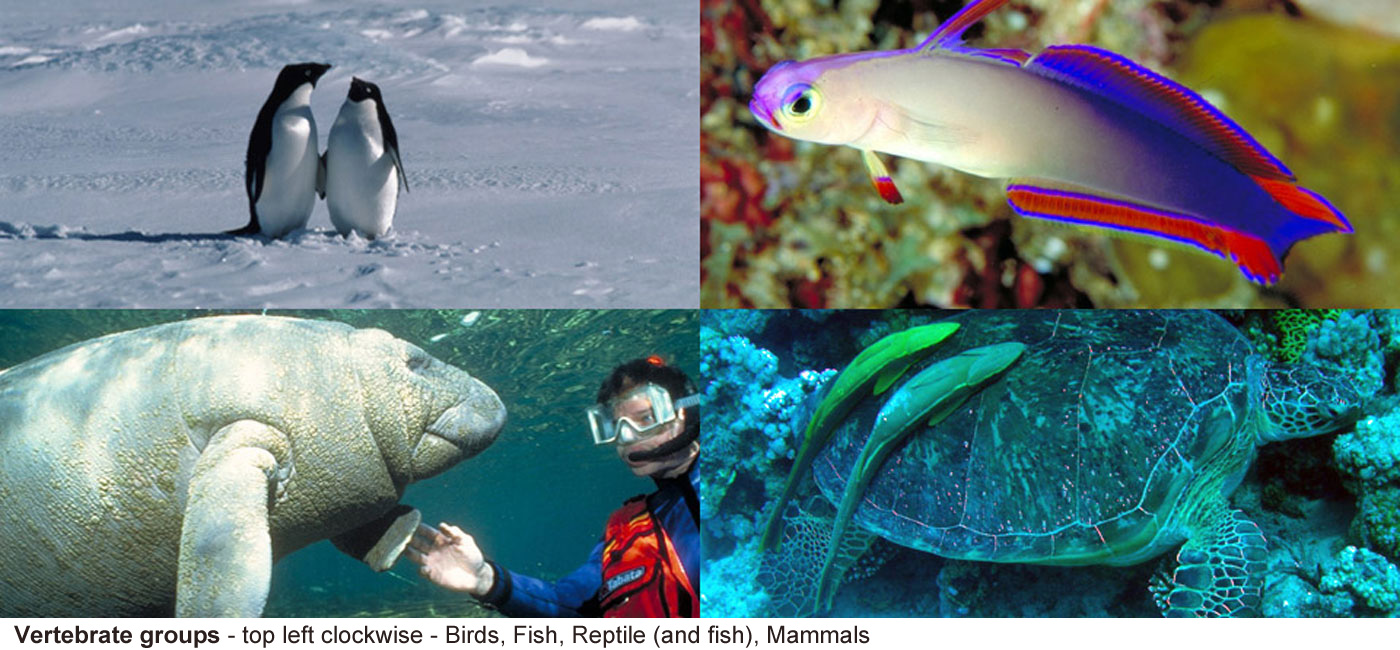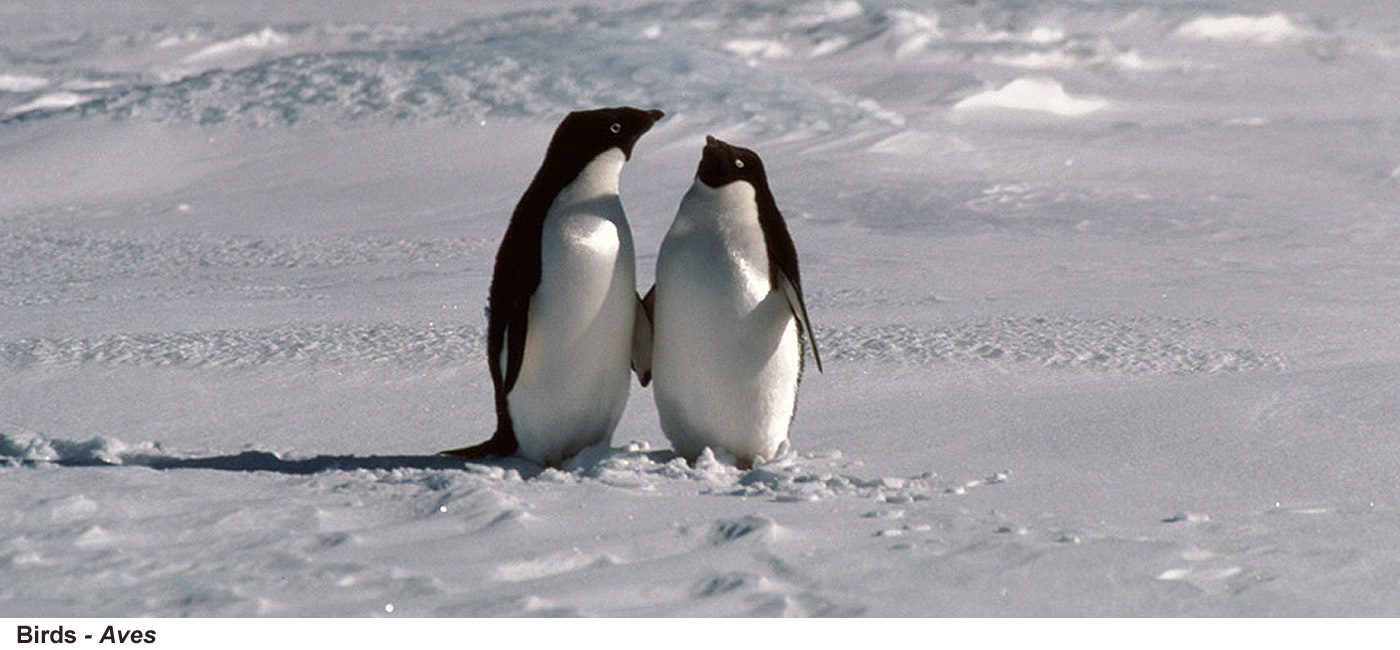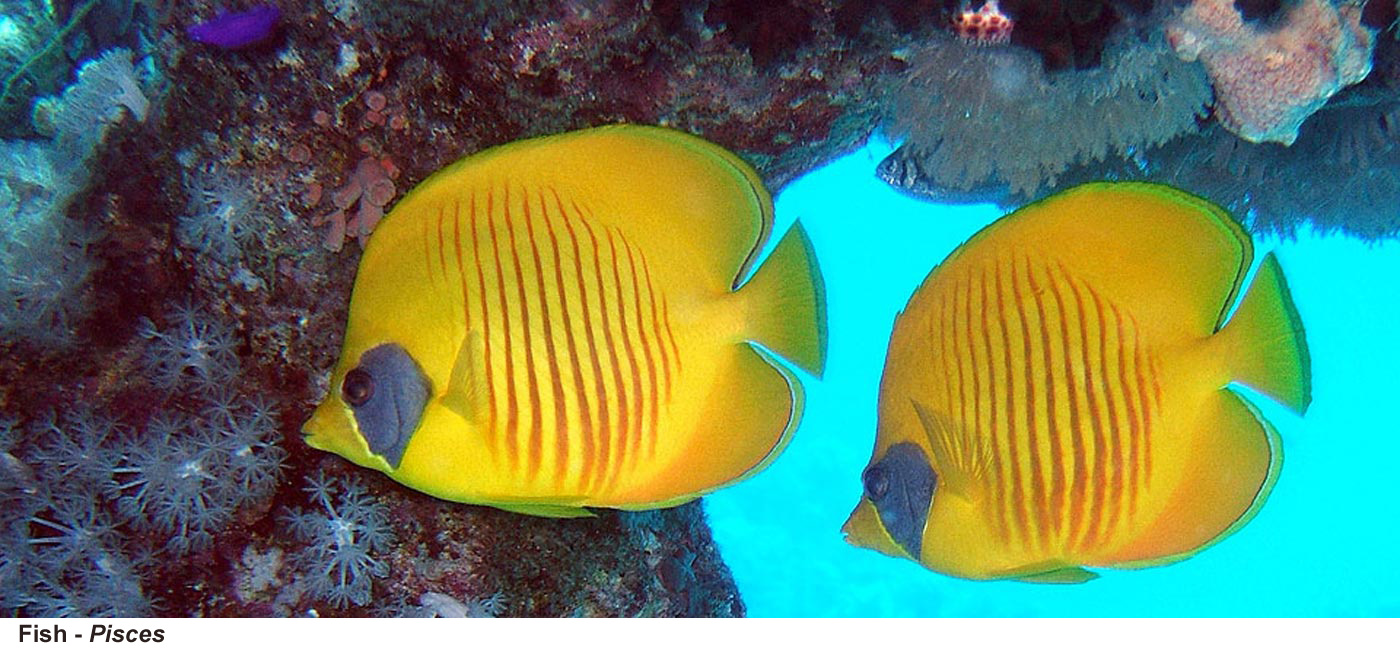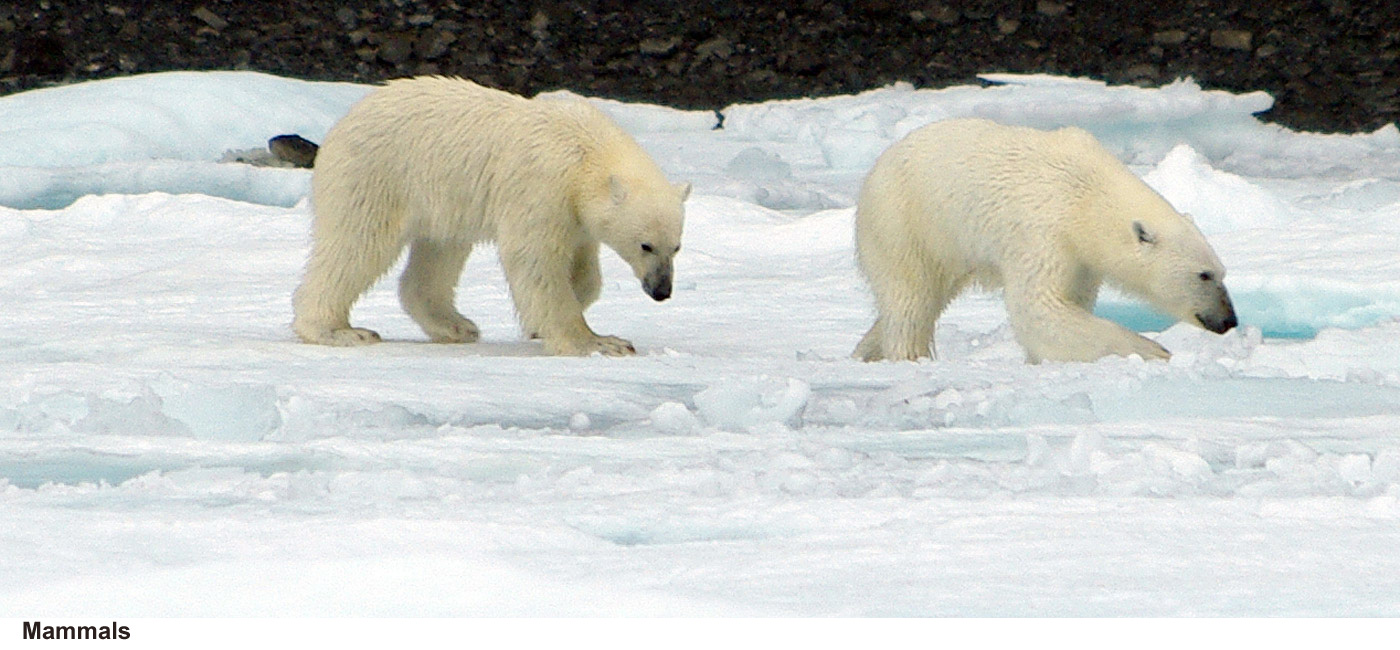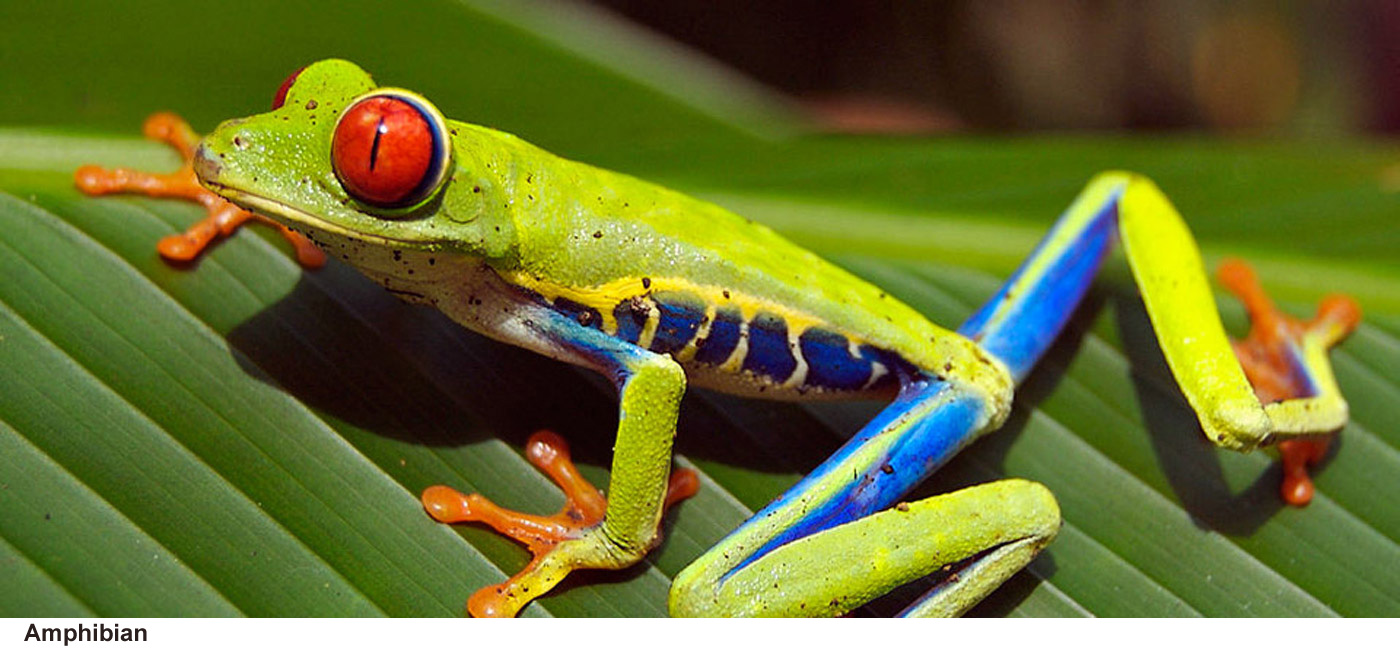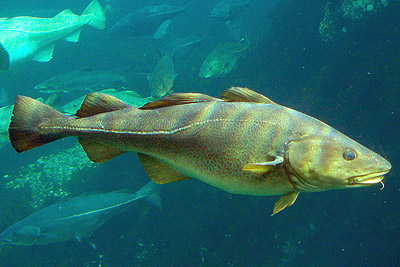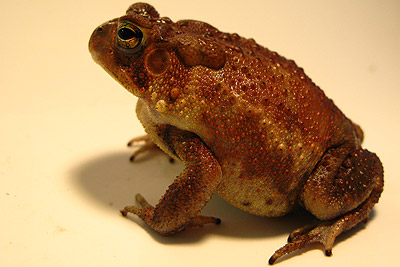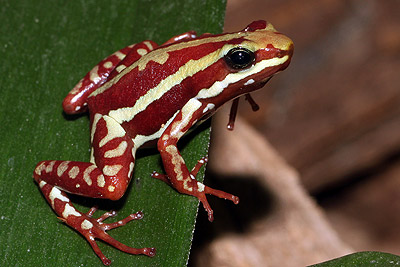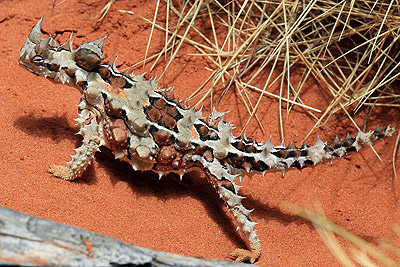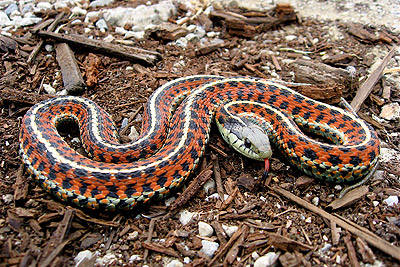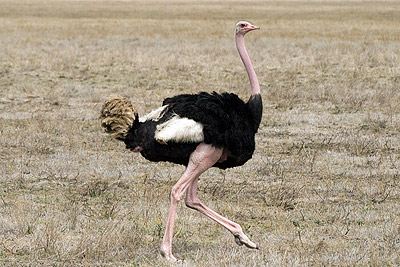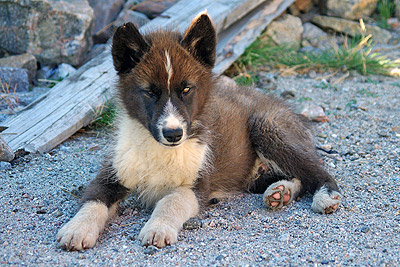Animal Groups - Vertebrates
Animals with Backbones
Classifying animals into groups according
to evolutionary connections
Kingdom - Animalia
Phylum - Chordata
more on Chordata
Subphylum - Vertebrata
Class Pisces - Fish
- Skin covered in scales
- Ectothermic, cold blooded
- Soft shelled eggs that must be laid in water
- External fertilization
- All members are fully aquatic
- Limbs modified into fins
- Gas exchange through gills
The fish were the first evolved of the vertebrate groups first arising in the seas of the world around 530 million years ago. Even today there is no other group that rivals fish as the dominant large animals in the seas and freshwater regions of the world. Fish are tied to the water immediately because of their gas exchange system of gills, once out of water the gills collapse, no longer being supported so vastly reducing the surface area to gain oxygen and lose carbon dioxide so they suffocate as we would if immersed into water. Despite there being more oxygen in air, the fish can't get it efficiently enough.
Fish are cold blooded, water takes away heat very efficiently so to be warm blooded all the time, they would have to generate huge amounts of heat. Smaller fish in particular would lose this very quickly. Some larger fish such as Tuna can warm the blood supplying their brain and swimming muscles to 20C above that of the surrounding water to improve their hunting ability.
e.g. sharks, eels, rays, carp, salmon, tuna, puffer fish, mackerel, wrasse, bass, flying fish.
More on Pisces - Fish
Class Amphibia - Amphibians
- Thin smooth permeable skin though which gas exchange (oxygen and carbon dioxide) can take place, gills are usually also present in the larvae and lungs in adults
- Ectothermic, cold blooded
- Soft unshelled eggs which must be laid in freshwater
- Most members undergo a metamorphosis from larval (usually purely aquatic) to adult stage
The first Amphibians arose about 370 million years ago. They evolved from fish and for a time were the dominant terrestrial (land) group of vertebrates. Like the Reptiles, those left today are much smaller than some of the huge extinct forms, the largest today is the Chinese Giant Salamander at 1.8m which itself would be dwarfed by the 9m extinct form Prionosuchus. They are limited in their ability to live in many habitats due to their damp skin that water (though also oxygen and carbon dioxide) can pass through so leading to them drying out. They also have to return to water in some manner as their eggs are soft shelled and will dry out unless kept moist.
Amphibians are sensitive ecological indicators with their permanently moist skins making them prone to even small amounts of water-borne pollution and clean water in which to lay their eggs to breed. Modern amphibians are in a state of decline and have been so for the last few decades, of 5,743 species of Amphibia, 32% are classed as at least threatened, which when compared to 12% of birds and 23% mammals.
e.g. frogs, toads, newts, salamanders.
Class Reptilia - Reptiles
- Waterproof skin covered in scales
- Ectothermic, cold blooded
- Hard shelled eggs that are waterproof (cleidoic - closed egg)
As every school child knows, the golden age of the reptiles was in the time of the dinosaurs, they were the dominant terrestrial vertebrates for 135 million years from around the start of the Jurassic era 200 MYA (million years ago) to the start of the cretaceous 65 MYA. When the dinosaurs disappeared a number of reptiles survived, these diversified and became the modern reptiles that survive today.
Reptiles are fully terrestrial not needing to return to the water at any time in their lives, this is due firstly to having waterproof skin that prevents them drying out and also as they lay hard shelled waterproof eggs. This has allowed them to be more successful on land and to be able to live in new habitats. Like the amphibians and fish, reptiles are cold blooded, this gives them problems that warm blooded animals don't have, however it also allows them to be energetically more efficient as they don't need to eat food just to generate heat. This allows a greater number of reptiles to live off a given amount of food than could warm blooded animals.
More on Reptilia - Reptiles
Class Aves - Birds
- Waterproof skin covered in feathers
- Endothermic, warm blooded
- Hard shelled eggs that are waterproof (cleidoic - closed egg)
- Beak or bill rather than teeth
- Bipedal (walk on two legs only)
- Forelimbs developed into wings
- Most members are highly adapted for flight with forelimbs modified as wings and many weight saving features such as hollow bones
Birds are considered to be the direct descendants of the dinosaurs, it is thought that feathers first evolved from scales and were initially used for extending the surface area of the forelimbs when catching insects.
Birds are warm blooded and take the concept to its extreme with many species having a very high metabolic rate. In the coldest regions of the planet, the animals that are facing the weather at its extreme even when they are small and so more likely to lose heat will be birds. They do this by eating a lot so they can burn it up and generate heat.
Almost everything about the way birds have evolved is connected to their ability to fly (including the metabolic rate mentioned above). They save weight by grinding food in a gizzard rather than having teeth, digestion is sometimes not very complete, better to get the easy nutrition from food and then eat more than carry around a dead weight for ever decreasing rewards. Laying an egg in a nest allows the female to avoid the weight of the developing embryo, they excrete uric acid which doesn't need much water to remove it, they have hollow bones and many other obvious and less obvious adaptations.
e.g. ducks, geese, penguins, gulls, finches, falcons, owls, hummingbirds.
More on Aves - Birds
Class Mammalia - Mammals
- Waterproof skin with hair or fur
- Endothermic, warm blooded
- Give birth to live young
- The young are supplied with milk from mammary glands by the mother(from which the group gets their name)
- Three middle ear bones
- Heterodont dentition, different types of teeth
The first primitive mammals arose around 225 MYA but the group had to wait until the end of the age of the dinosaurs 65 MYA before they could really start to diversify and become one of the dominant vertebrate groups on earth. The mammals are arguably the most diverse of the vertebrate classes with enormous ranges in size and lifestyle. There are members that have developed true powered flight in the bats, some that burrow under the earth, some that swim in all parts of the oceans, very large and very small herbivores, carnivores and omnivores. The blue whale is the largest animal that has ever lived, larger than any dinosaur. There are some mammals that undergo migrations of thousands of miles or that can take the advantage of any new environment they are introduced to.
Mammals are easily the most intellectually advanced of any life forms on earth with elephants, whales, dolphins, primates and of course man, the most successful mammal of all (possibly).
Mammals are defined by the production of milk by the mother to feed infants on by mammary glands that are evolved from sweat glands.
e.g. whales, bats, dogs, cats, elephants, mice, rats, gorillas, bears, deer, cattle, sheep.
More on Mammalia - Mammals

